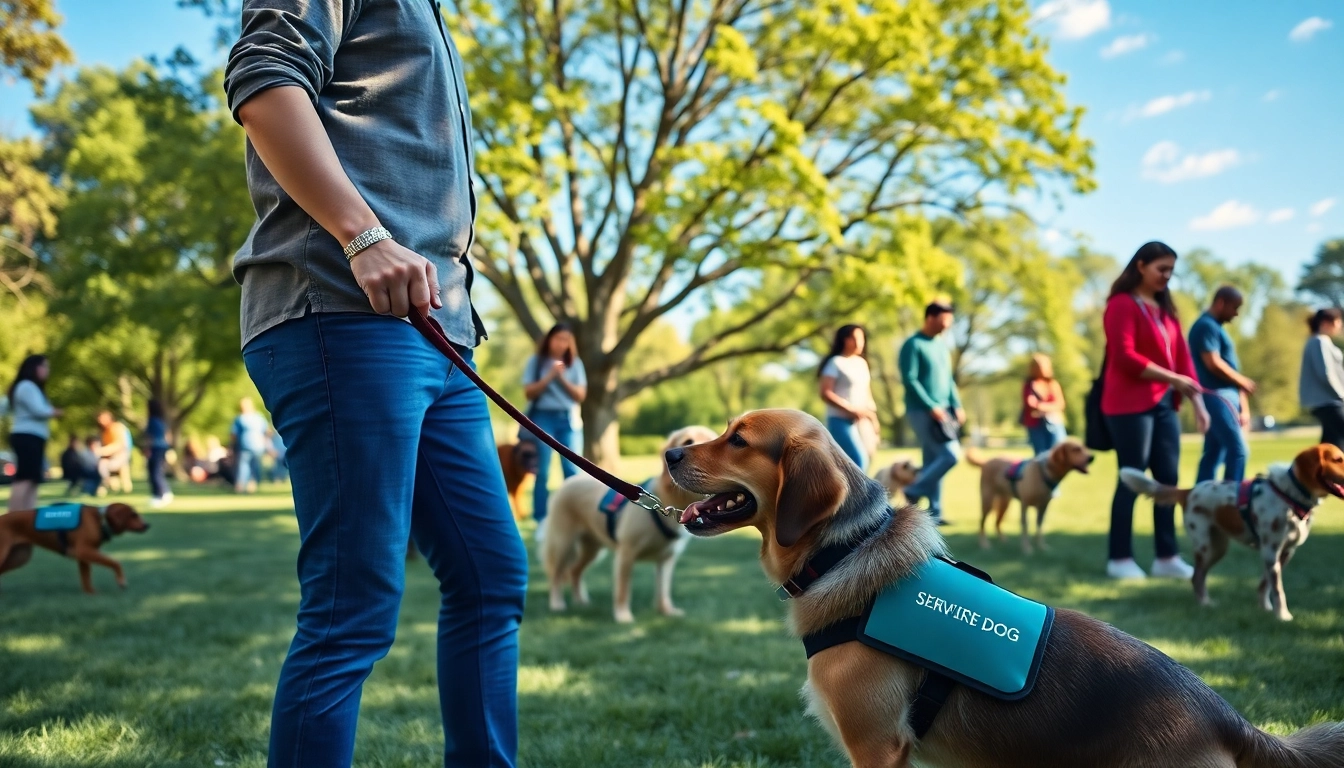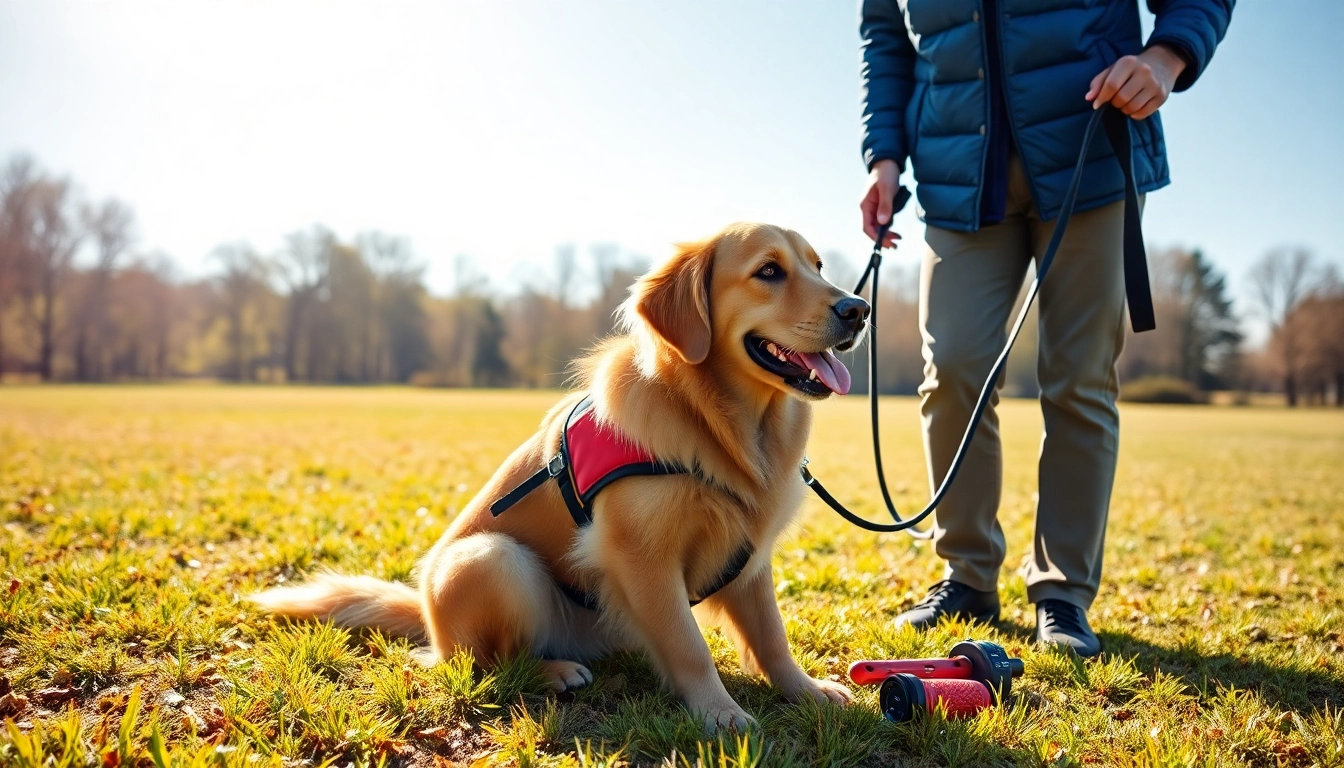Understanding the Role of Service Dogs
What is a Service Dog?
A service dog is a dog that has been specifically trained to perform tasks for individuals with disabilities. These tasks may include guiding individuals who are visually impaired, alerting those who are deaf, pulling wheelchairs, alerting and protecting a person who is having a seizure, or calming a person with post-traumatic stress disorder (PTSD) during an anxiety attack. Unlike traditional pets, service dogs undergo extensive training and certification to perform these tasks effectively and safely, acting as a vital support system for their handlers.
Types of Disabilities Covered
Service dogs are trained to assist individuals with various disabilities, including but not limited to:
- Physical disabilities such as mobility impairments
- Visual impairments
- Hearing impairments
- Seizure disorders
- Psychiatric conditions like PTSD, anxiety, or severe depression
The breadth of services provided by these dogs reflects their versatility and unwavering commitment to their handlers’ well-being.
Legal Framework for Service Dogs
The legal framework surrounding service dogs is primarily governed by the Americans with Disabilities Act (ADA). Under this law, a service dog is defined as a dog that has been individually trained to do work or perform tasks for an individual with a disability. The law also stipulates that handlers have the right to access public spaces accompanied by their service dog, provided that the dog is not posing a direct threat or disrupting others. Importantly, it is crucial to note that while emotional support animals can provide comfort, they do not enjoy the same legal protections as service dogs.
How to Get a Service Dog
Identifying Your Needs
The first step in the journey to get a service dog is identifying your specific needs. Understanding what tasks you require assistance with and how a service dog can help is vital. It helps narrow down the type of service dog that would best meet your needs. For instance, a person with mobility challenges may need a different type of service dog compared to someone who has PTSD. It’s important to focus on your daily challenges and how a service dog may alleviate them.
Finding a Qualified Service Dog Organization
Once you have identified your needs, the next step is to find a reputable organization that trains service dogs. Research different organizations thoroughly, looking into their training programs, accreditation status, and the types of dogs they typically work with. Reading reviews and testimonials from previous clients can also provide valuable insights into the experiences of others. Many organizations have specific application processes and requirements, which you should familiarize yourself with before proceeding.
Application Process Insights
The application process to get a service dog can vary, but generally involves several key steps:
- Submitting an application: Complete the organization’s application form, providing necessary documentation of your disabilities.
- Evaluation: Many organizations will conduct an evaluation to assess your specific needs and determine what type of service dog would be most beneficial.
- Waiting List: Depending on the organization, there may be a waiting period as dogs are trained and matched with handlers.
- Training: Once matched, there may be an additional training period for both you and the dog to ensure a smooth transition and effective partnership.
Training Your Service Dog
Basic Commands Every Service Dog Should Know
To be effective in their role, service dogs must master certain basic commands. These commands not only help with daily tasks but also ensure the safety and well-being of both the dog and their handler. Essential commands include:
- Come
- Stay
- Heel
- Leave it
- Drop it
Consistency during the training process is key. Using positive reinforcement methods, such as treats and praise, can significantly enhance the learning experience for service dogs.
Advanced Tasks for Specific Disabilities
In addition to basic commands, service dogs can be trained to perform advanced tasks tailored to their handler’s specific needs. For example, dogs assisting individuals with seizure disorders might be trained to lie close to their owner during a seizure or alert someone nearby. Similarly, dogs supporting individuals with PTSD can learn to identify anxiety attacks and provide grounding techniques, which can be crucial in stress-inducing situations.
Choosing the Right Training Program
Selecting the suitable training program is essential for the success of your service dog partnership. Look for programs that are certified, either through official bodies or organizations recognized by the ADA. The training should cover both the dog’s skills and handlers’ responsibilities, focusing on daily interactions, care routine, and troubleshooting potential behavioral issues.
Maintaining a Healthy Relationship with Your Service Dog
Daily Care and Well-Being
Once you have partnered with a service dog, ensuring their health and well-being becomes paramount. This includes providing nutritious food, regular vet check-ups, and maintaining a consistent exercise routine. A well-cared-for dog will be more effective in their role and form a stronger bond with their handler.
Socialization Tips for Your Service Dog
Socializing your service dog is crucial for its development and performance. Exposure to different environments, people, and other animals helps build their confidence and adaptability. Regular outings, positive interactions, and training sessions in varied settings can enhance a service dog’s ability to navigate public spaces without becoming anxious or distracted.
Supporting Your Dog’s Health
In addition to regular veterinary care, supporting your service dog’s health includes mental stimulation and social interaction. Engage them in training sessions, playtime, and exploring various environments. This not only keeps them physically fit but also sharpens their skills and fosters a strong bond between you and your dog.
Resources and Support for Service Dog Handlers
Connecting with Other Service Dog Owners
Joining support groups or online communities for service dog owners can provide invaluable insights and encouragement. These platforms offer spaces to share experiences, ask questions, and collaborate on best practices. They can also provide emotional support, understanding the unique challenges service dog handlers face.
Legal Rights and Responsibilities
As a service dog handler, it’s essential to understand your legal rights under the ADA and other applicable laws. This includes knowing where you can take your dog and what accommodations are required by businesses and public spaces. Additionally, handling your service dog responsibly includes maintaining control in public spaces and ensuring that your dog is well-behaved and not posing risks to others.
Financial Assistance Options
The investment required to get a service dog and maintain it can be significant, but many organizations provide financial guidance and assistance. Research potential funding sources, such as non-profits dedicated to service dog organizations or local charities, to explore opportunities that may alleviate financial burdens associated with training and care.



